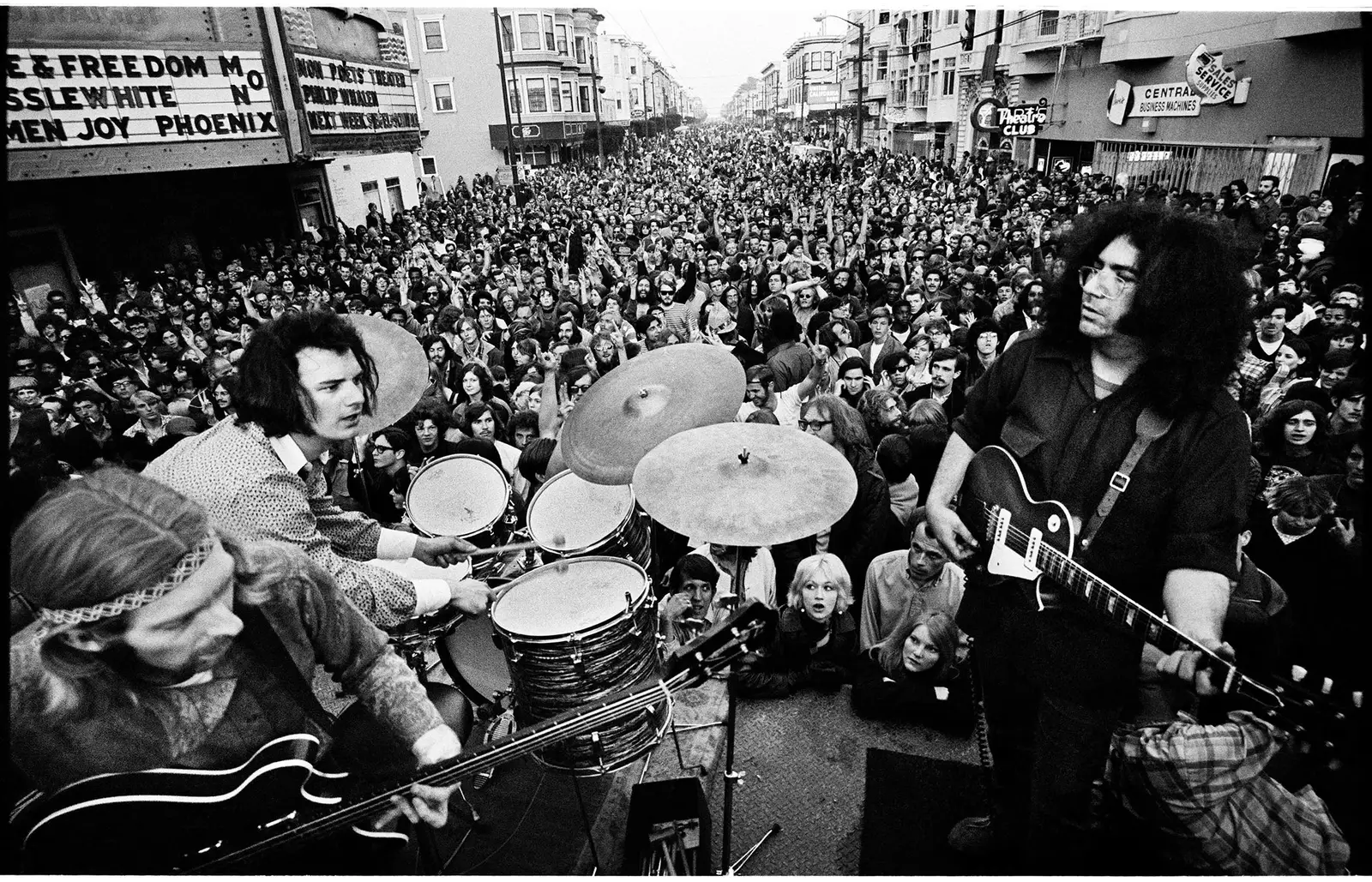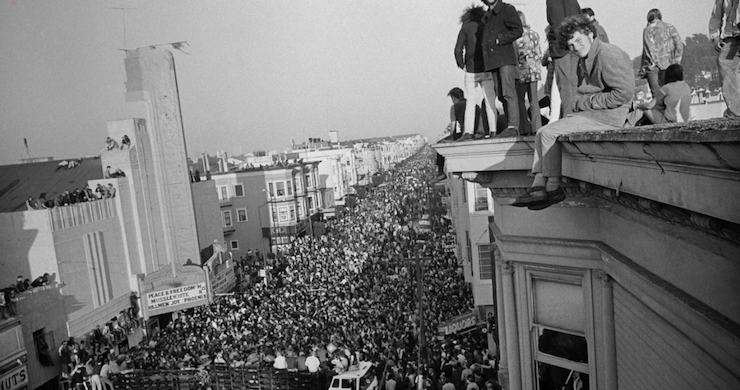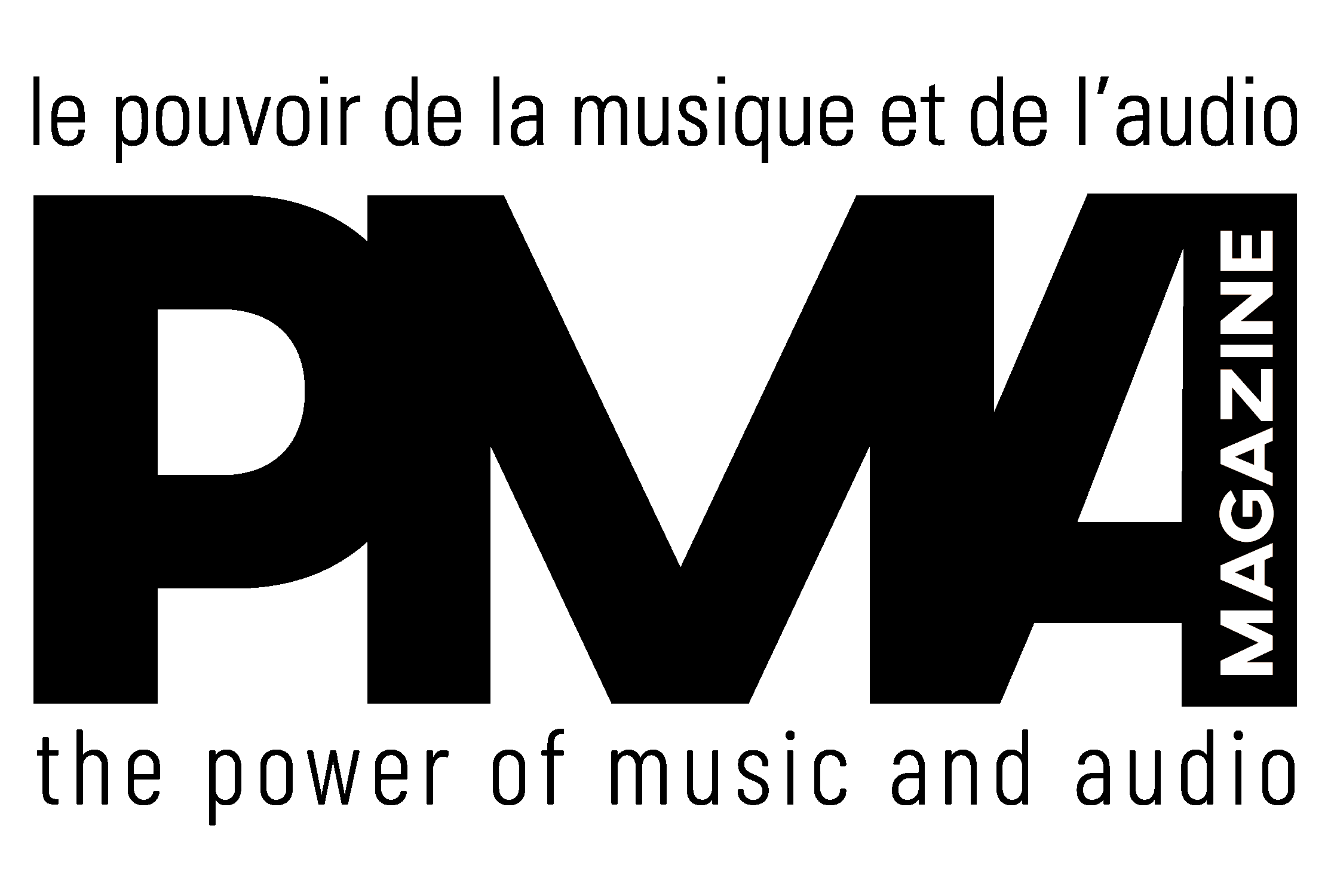
The 1960s were a transformative decade, replete with cultural shifts and musical evolution. At the forefront of this change stood the Grateful Dead, who, on March 3, 1968, gave an unforgettable performance on Haight Street.
The Dead’s free concert that day was more than just an enthralling musical experience; it was a statement, a beacon of unity in tumultuous times. The band delved straight into a compelling rendition of “Viola Lee Blues,” a piece that spanned over twenty-one minutes, taking the audience on a transcendental journey. They then seamlessly transitioned into tracks like “Smokestack Lightning” and “Lovelight,” with Pigpen’s vocals and organ resounding through the streets, complemented by Lesh’s signature bass bombs and Garcia’s electrifying guitar work.
However, the backdrop to this historical concert adds layers to its significance. Weeks prior, a skirmish between the police and Haight’s vibrant hippie community had escalated tensions. This prompted a street festival aimed at restoring peace and unity. Hearing of this, the Dead, with the indomitable spirit they were known for, decided to perform. Rolling up a flatbed, with assistance probably from Pig’s Hell’s Angels connections, they plugged into the Straight Theater and set Haight Street alive with music.

A photograph taken that day, showing a sea of people engrossed in the music, has since become emblematic of the 1960s counterculture. The concert’s spontaneous nature underscored the magic that Haight-Ashbury once held, especially in the wake of the Summer of Love in 1967. Yet, this performance also marked a turning point. It served as a poignant farewell to an era that was fading, even though the Dead had already begun distancing themselves from the neighborhood years before.
The surviving audio recording, though imperfect due to technical glitches, captures the essence of the day. Some attendees reminisce about a rousing “Dancin’ in the Streets” that probably closed the show, and it’s speculated that there was a complete “Other One” suite.
By 1968, Haight-Ashbury was transforming. What was once the heart of the hippie movement, celebrating events like “The Acid Tests” and the “Gathering Of The Tribes/Human Be-In,” was now grappling with its own identity. The Dead, despite moving away, never truly left. They continued to play in San Francisco, showcasing their commitment to the city and its people.
That day, as the Dead performed tracks like “Turn On Your Lovelight,” “Hurts Me Too,” and “Dancin’ In The Street” for thousands of fans, they not only celebrated the spirit of the Haight but also encapsulated the essence of an era that would forever be etched in history.









Leave a Reply